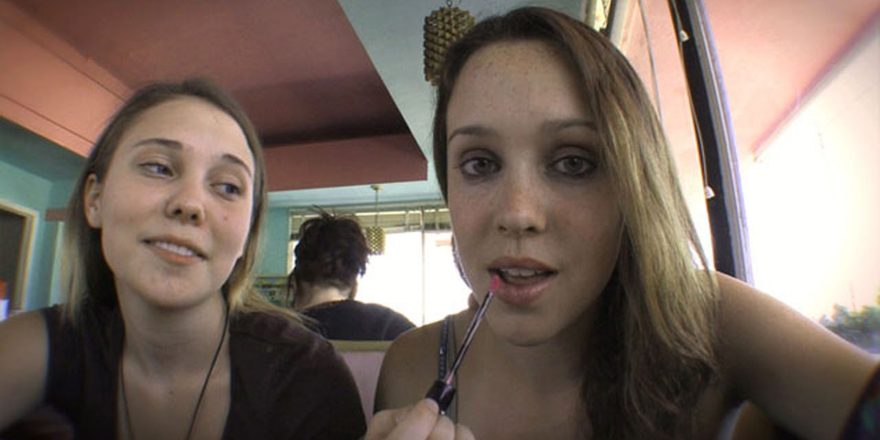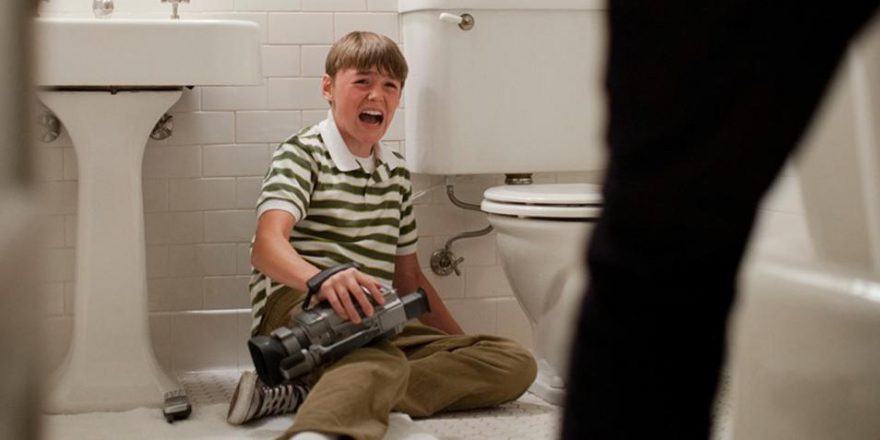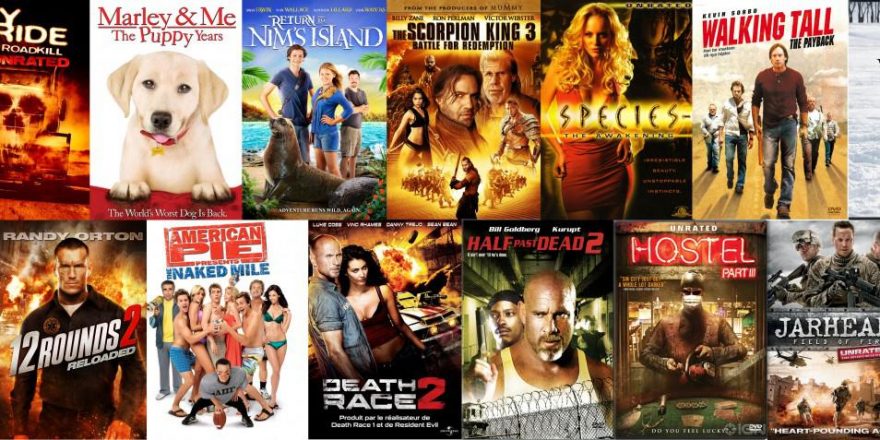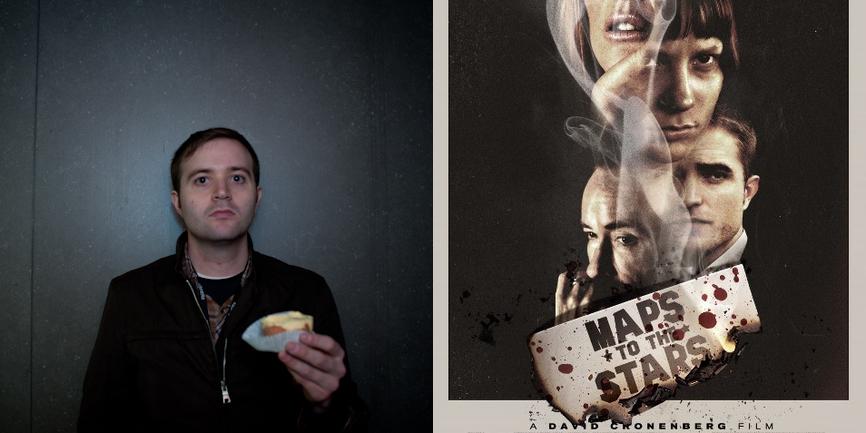As a lifelong horror fan, few trends in American cinema baffle me as completely as the seemingly endless appeal of found-footage movies. To a certain extent, I saw the writing on the wall back in 1999 when The Blair Witch Project came out; its crude low-budget aesthetic was so easily replicable that I started to dread the inevitable deluge of imitations before the end credits started rolling. What surprised me about the gimmicky found-footage subgenre was its endurance – I assumed that after a couple years audiences would tire of the corny faux-realism and hokey jump scares (mostly the product of contrived sound design), and the result would be a return to my idea of “real” horror movies. By which I mean the kind of horror filmmaking practiced by Carpenter, Cronenberg and other directors whose effects were achieved via carefully calibrated compositions, lighting, and editing married to subject matter tapping into either primal fears or sociological unease or, in the best cases, both.
That tradition hasn’t completely died – Eli Roth and Fede Alvarez, among others, have picked up where Carpenter left off – but the predominant mode of expression in horror has definitely moved away from classicism and toward the aesthetic of things like the witless and ugly Paranormal Activity movies, films that apply the “less is more” philosophy to an almost comical extent. My big issue with found-footage movies is that usually the choice to employ a documentary aesthetic isn’t a creative decision but a way of avoiding creative decisions, of taking the kind of precise visual construction practiced by Carpenter and Roth off the table and relying on the audience to do all the work. The idea that what you don’t see is scarier than what you do has been exploited by a whole generation of filmmakers making found-footage movies in which almost nothing actually happens.
The terror in these movies comes not from the screen but from what audience members project onto it, their imaginations whipped into a frenzy by the very act of entering the theater to see a horror movie – they’re scared when they walk in, and the stupefying boredom of most found-footage films increases their anxiety as they sit in the theater working themselves up over what could (but often doesn’t) occur. I’ve never bought this idea that what you don’t see is scarier than what you do (if that’s the case, wouldn’t the greatest horror movie ever made be two hours of a blank screen?), but it obviously works for a lot of fans. It also works for a lot of lazy screenwriters and directors, of whom there have been so many that there’s a kind of Gresham’s law at work in found-footage, where the abundance of bad movies make it more difficult to find the good. And there are some good ones, movies like Unfriended and Brian De Palma’s Redacted, that use the conventions of found-footage as expressive visual tools.
The found-footage subgenre has also yielded one unadulterated masterpiece that ranks with the greatest horror films ever made – and which deserves to be far better known than it is. That film is Michael Goi’s Megan is Missing, a relentlessly unsettling thriller that reinvigorates subject matter that has devolved into cliché in episodic TV procedurals and true-crime shows, shattering both the clichés and the viewer’s sense of complacency with a thoughtful approach to both form and content. The movie follows two teenagers, Megan and Amy, who disappear within a few weeks of each other after Megan begins an online relationship with an older boy. Goi’s conceit is that the story is being told after the fact via videos that have been unearthed following the abductions: webcam footage, surveillance video, iPhone chats, news reports, etc. The final 22 minutes of the movie consists of unedited, unaltered footage taken from Amy’s home video camera after it’s discovered in a trash can, and this sequence, in its own unadorned way, is as impressive a cinematic tour de force as the opening shot of Touch of Evil. It contains the most disturbing imagery I’ve ever seen in a movie, and it’s all the more disturbing because it’s earned – Goi isn’t using violence for cheap effect or exploitation, but to stare unblinkingly into the essence of pure, agonizingly realistic evil and to convey human suffering with horrifying immediacy.
It isn’t exactly a spoiler to say that things don’t end well for the girls, and, in any case, I don’t think any amount of preamble can truly prepare the viewer for Megan is Missing or undermine its impact. I was introduced to the movie by filmmaker Kelly Goodner, who was as effusive in her praise of Goi’s technique as she was distressed by the content – she cautioned me repeatedly that I was about to, as Joaquin Phoenix said in 8mm, see things I wouldn’t be able to unsee. I was a little skeptical; given my steady diet of gory horror films ever since I discovered Romero’s Dawn of the Dead at age 10, I figured I was about as desensitized as you can get. It takes a lot for a movie to really scare or shake me, but 57 minutes into Megan is Missing there were a pair of images that had me scrambling for the pause button. I had to stop the DVD and think about whether or not I wanted to keep watching, because I suddenly realized that Goi was so fearless and uncompromising a filmmaker that finishing the movie could cause me permanent psychic damage. Ultimately I had to see where the movie was going, and it turns out Kelly’s warnings were not hyperbole – Megan is Missing stuck in my head and got lodged there in a way very few films, even the best ones, do after only one viewing.
What makes the film great is a combination of Goi’s meticulous research as a writer and his equally rigorous attention to film language as a director. Megan is Missing is essentially a cautionary tale, a brutal depiction of the dangers facing teenage girls as the lines between the online world and the real one continue to blur. (The movie was released in 2011, and its implications have only grown more relevant in the years since with the rise of Twitter, Facebook, Instagram, etc.) This, of course, is the stuff of dozens of Lifetime TV movies, and there are many elements of Goi’s story – especially when it comes to the kidnapping and torture – that we’ve seen handled with varying degrees of taste and skill on hundreds of hours of episodic procedurals such as CSI and Law and Order as well as true crime shows such as Dateline and the stuff that clogs the ID Channel’s schedule. The difference between Goi’s film and those treatments of similar material lies in his focus on sociology and psychology; he spent a lot of time before shooting hanging out with teenagers and observing their language and behavior, and he spends the first half of Megan is Missing on their rituals and home lives, rooting his story in anthropological detail before it turns into a horror movie.
That said, the first half of the film is a horror movie in its own way, as Goi presents some truly appalling and depressingly plausible depictions of the ways teenage boys disrespect teenage girls, and the ways teenage girls disrespect themselves. Through a sophisticated web of relationships in which we meet Megan and Amy’s friends and family and see how they’re connected, Goi subtly but clearly posits some theories about what constitutes sexual power and where misguided assumptions about that power are born. There are no clear, easy answers in the film about why Megan and Amy are targeted, but there are hints and provocations – and indications that vulnerability starts at home, one of the reasons I don’t think the movie can be written off as being unpleasant and disturbing without a purpose. Megan is Missing is one of those rare films that does have a kind of utilitarian purpose, providing both parents and teenagers with questions well worth examining.
At the same time, it’s not preachy or simplistic in the way most approaches to the subject matter are. Goi burrows so deeply into his characters’ lives and into the ways our mass media presents teenagers to us and to themselves – and the way they present themselves to each other online – that Megan is Missing transcends genre and form to become something wholly unique. Just as he isn’t interested in exploiting his characters or subject matter, Goi isn’t interested in exploiting the conventions of found-footage; his film doesn’t use the language of news reports, video diaries, and surveillance footage as much as it explores them, asking important questions about how we read their information and how we use it or abuse it – and how it can be used as a weapon in the hands of a psychopath.
Goi’s background is in cinematography; he was the Emmy-nominated director of photography on several seasons of American Horror Story, among other notable films and TV series. He understands both horror and visual grammar inside and out, and synthesizes everything he knows in a deceptively simple low-budget package in Megan is Missing. It’s the kind of movie that has so much in common – on a purely superficial level – with lesser works that it’s easy to underestimate or dismiss, and it’s so harrowing and repellent at times that many viewers might want an excuse to dismiss it. Close examination, however, reveals a cinematic and moral intelligence at the film’s core that earns comparison with Michael Powell’s Peeping Tom and the best of Wes Craven – it combines savagery and sadness like no other movie I’ve ever seen.







